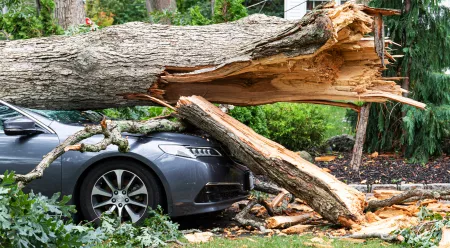Owning a vehicle in Ontario is almost essential. Not only do you get to respond to emergencies faster, enjoy privacy while on the road, and save time, you also get to enjoy the freedom and independence that comes with it. However, you might outgrow that old car, need to purchase a newer model or want to give the old vehicle to a close family member. If you are selling your vehicle in Ontario, you may deal with a lot of potential buyers. Most people, however, are unsure of how to transfer ownership of the vehicle when selling. Also, most ignore the importance of a vehicle ownership document, the green piece of paper that you probably have tucked in your glove box.
Before we go any further, let’s understand vehicle ownership better.
This is a permit used as proof of vehicle ownership. It is a green document and is offered once the ownership transfer process is completed. It contains details including the license plate number, the VIN, the model and make of the car as well as the owner’s name and address details.
What is the importance of vehicle ownership?
Contrary to what the majority of people may know, vehicle ownership not only provides proof of ownership. This document is also important when making an insurance claim since the owner of the vehicle is the person who will be compensated in case of any damage against the insured peril.
Transferring vehicle ownership in Ontario is not as simple as giving the new owner the car keys. While the process of vehicle ownership transfer is not complicated, there are different requirements based on whether you are transferring the vehicle ownership to a family member or a non-family member. Let’s dive into detail on the process of vehicle ownership transfer in Ontario.
START A QUOTE
Transferring vehicle ownership to a family member in Ontario
This process can be done with less formality compared to transferring to non-family members. However, the government requires inter-family vehicle ownership transfers to be done once per 12 months. A family member can be a parent or step-parent, spouse, grandparent or step-grandparent, grandchild or step-grandchild, child or step-child, daughter-in-law or son-in-law, step-sibling or sibling, father or mother-in-law, adopted sibling and half-siblings. Both inter-family parties involved in the vehicle ownership transfer are required to visit a Service Ontario location.
The vehicle ownership process will only be initiated if the following details are provided:
- Proof of vehicle insurance in Ontario
- Ontario Driver’s license
- Vehicle Ownership permit
- A declaration of vehicle plate transfer
- A sworn and notarized statement for a family gift in the case of a used motor vehicle
- Drive clean test results- This will only apply to persons exempted from retail tax and where the vehicle is due for a dive clean test.
- Safety standards certificate. Inter-spouse transfers will not be needed provided a notarized spousal declaration is signed.
Non-family vehicle ownership transfer
Transferring a vehicle to a non-family member carries more risk compared to inter-family transfers. Why so? Since the two parties are not related in any way, it is easy to get short charged, whether you are the buyer or seller. The most important step is ensuring that the vehicle identification number matches with that of the permit.
To transfer vehicle ownership to non-family members in Ontario, a seller must provide:
- A used vehicle information package.
- A signed bill of sale that includes the seller’s name, the buyer’s name, address, the purchase price and the transaction date.
- Transfer application. This information can be found on the back of the vehicle ownership document.
- A safety standards certificate- This shows that the vehicle being transferred meets the required safety standards in Ontario. Any licensed mechanic from an Ontario Motor Vehicle Inspection Station can carry out the vehicle safety inspection.
If you are a vehicle seller, here are some extra tips:
- When you sell your motor vehicle, ensure you remove the license plates. This safeguards you against paying for the new owner’s speeding or parking tickets. After the sale, the license plate should stay with the buyer and not the vehicle.
- If you have any full months remaining on your plate stickers, ensure you ask for a refund from any service Ontario centre.
- Always notify the relevant authorities in Ontario that the vehicle has been transferred to a new owner.
A buyer looking to purchase a used vehicle in Ontario should:
- Check the history of the vehicle. This includes issues such as accidents caused, vehicle maintenance records and even mileage. All this information can be found using reputable service providers in Ontario or the Ontario government website.
- Carry out a Drive Clean emissions test. This is a free search required after every two years for motor vehicles older than seven years. It is also important to carry out the test despite the age of the vehicle as it will provide a history of any emission issues in the past. Please note that the Vehicle Identification Number will be required for this test.
- You do not want to purchase a vehicle from a non-authorized owner. As such, you must ensure that the vehicle owner is the legally registered owner. While this information can be availed by the seller via the Used Vehicle Information Package, ensure to see the driver’s license. Look out for a name match between the license and the registered vehicle owner information. The Vehicle Identification Number should also match in both the owners’ permit and the vehicle.
- Is the vehicle in any form of debt? Ensure you get a report detailing the debt record in the Used Vehicle Information Report.
- Carry out a visual inspection. Look out for debts as well as missing parts that can be expensive to replace or unavailable.
Please note that the vehicle registration must be undertaken within 6 days after the purchase. For the vehicle registration, you will need to provide:
- Proof of vehicle insurance
- Ontario’s driver’s license
- A used vehicle information package
- The vehicle bill of sale
- The safety standards certificate. Please note that this will not be required for transfers between spouses if a notarized spousal declaration is signed.
- The owner’s permit. This should also detail a completed application for the vehicle ownership transfer
- The odometer reading data
As per the details provided, one of the key requirements when transferring vehicle ownership in Ontario is proof of insurance. When it comes to selling, buying or even transferring vehicle ownership, having a valid and active vehicle insurance policy is mandatory. This brings on the importance of having a valid insurance policy with a reputable insurance provider.



